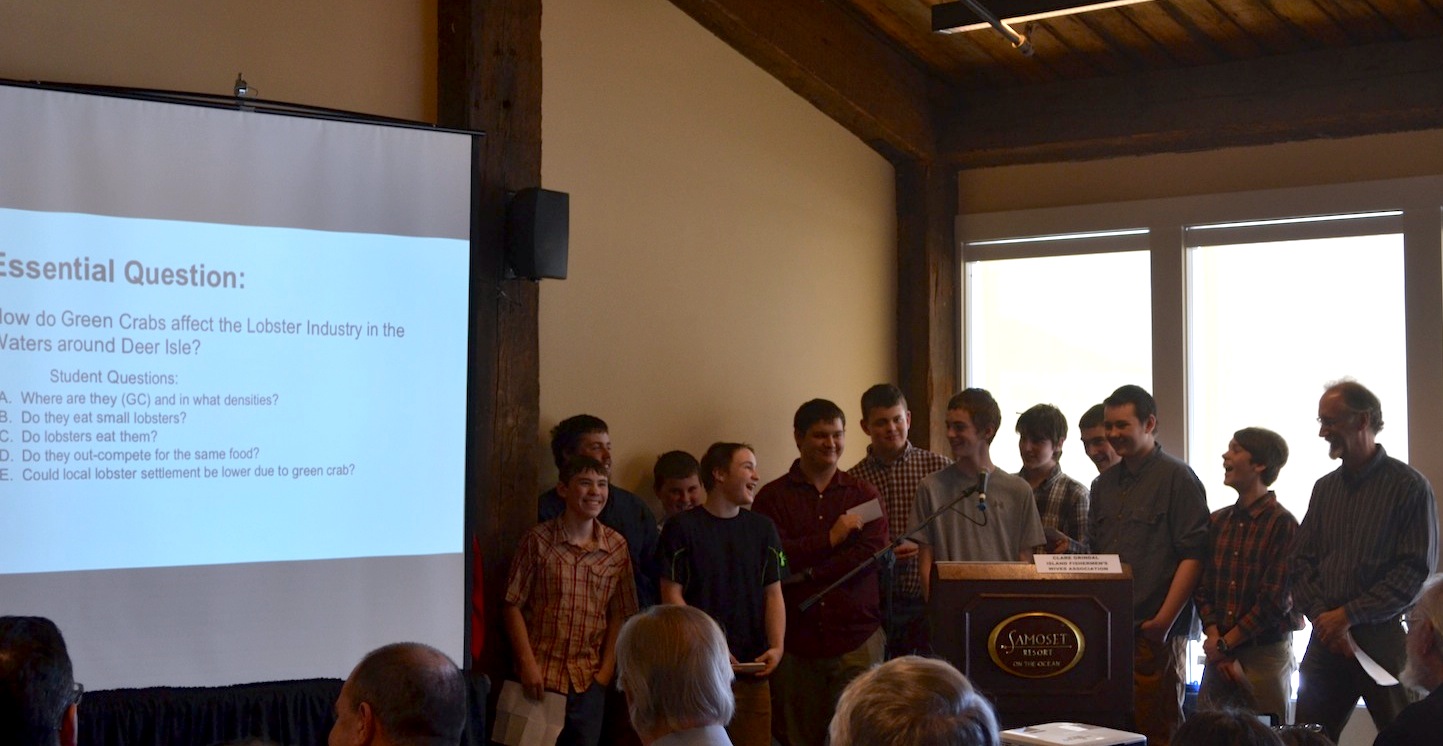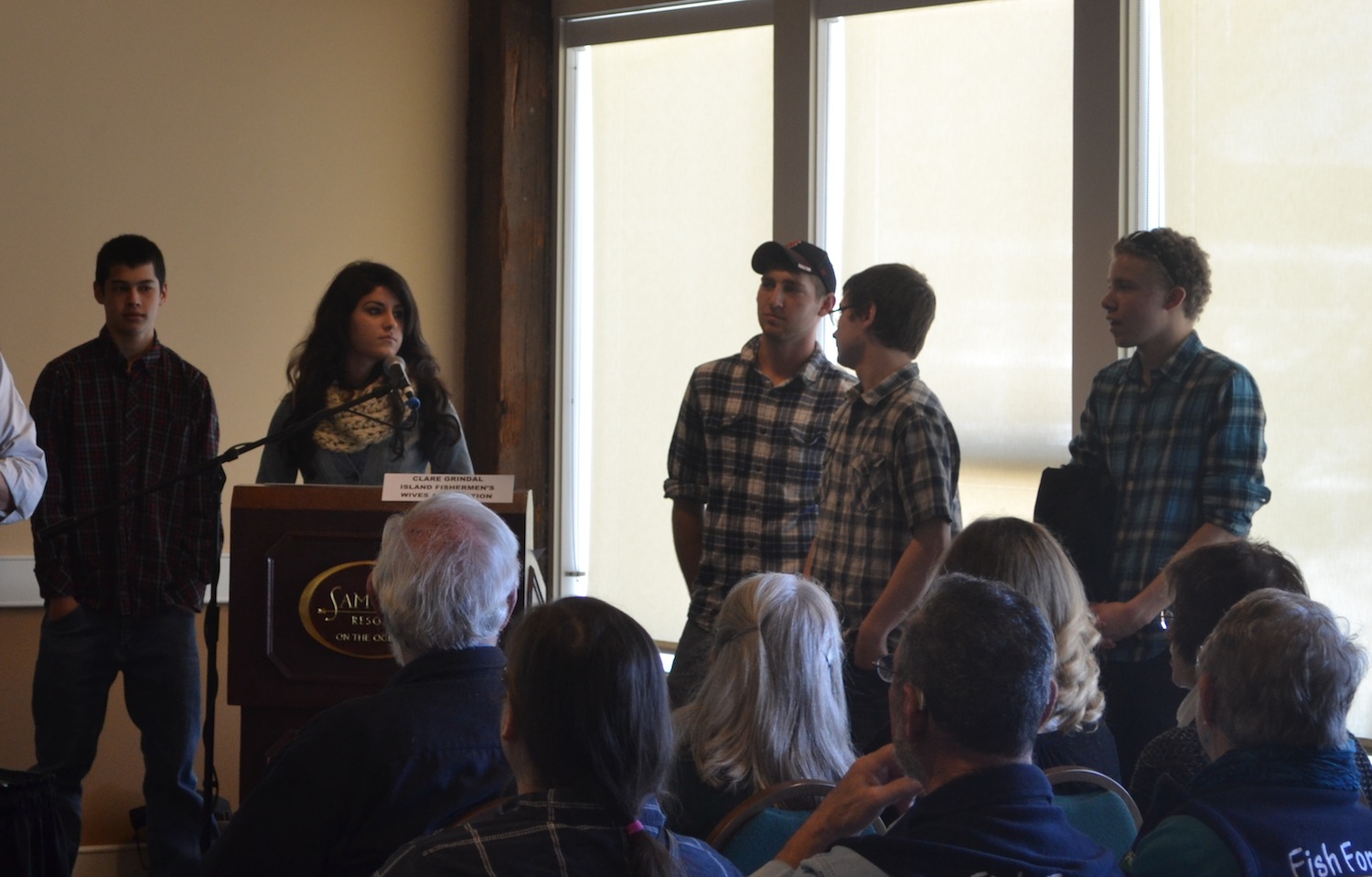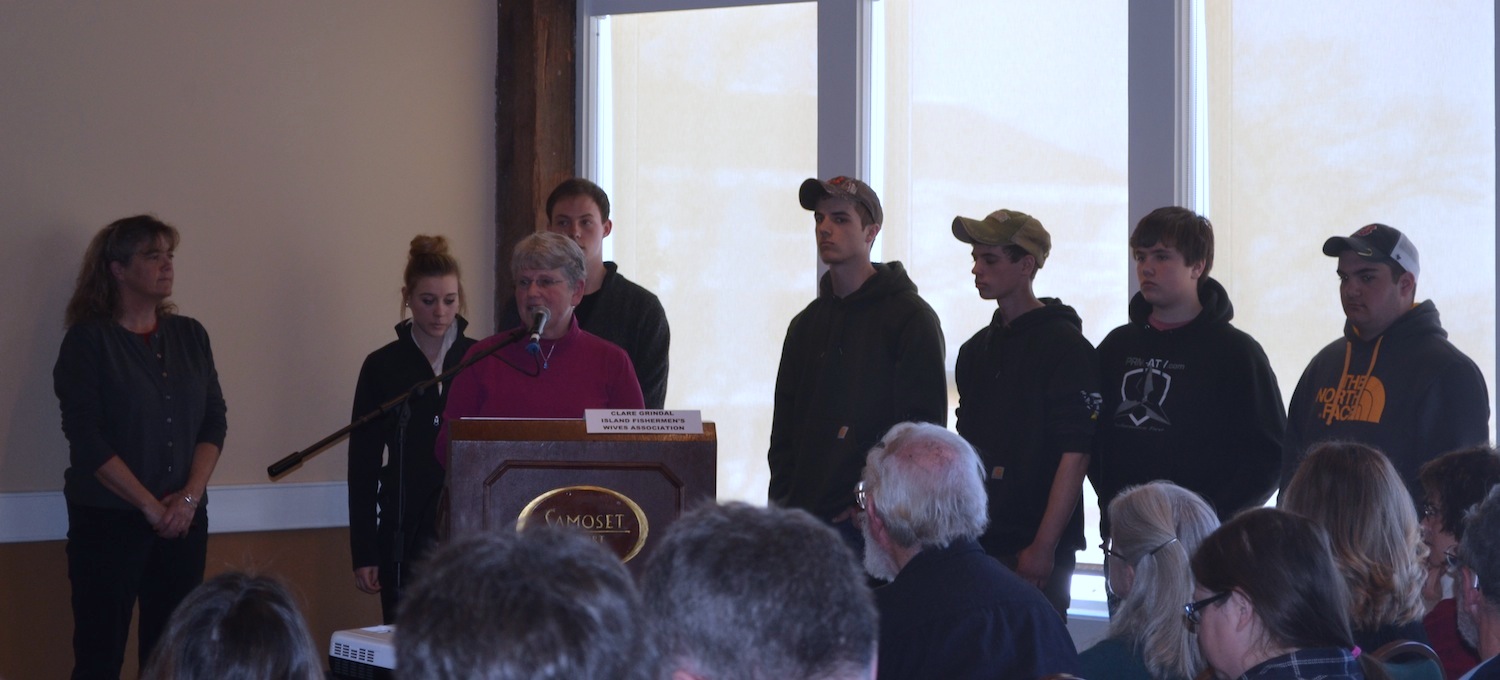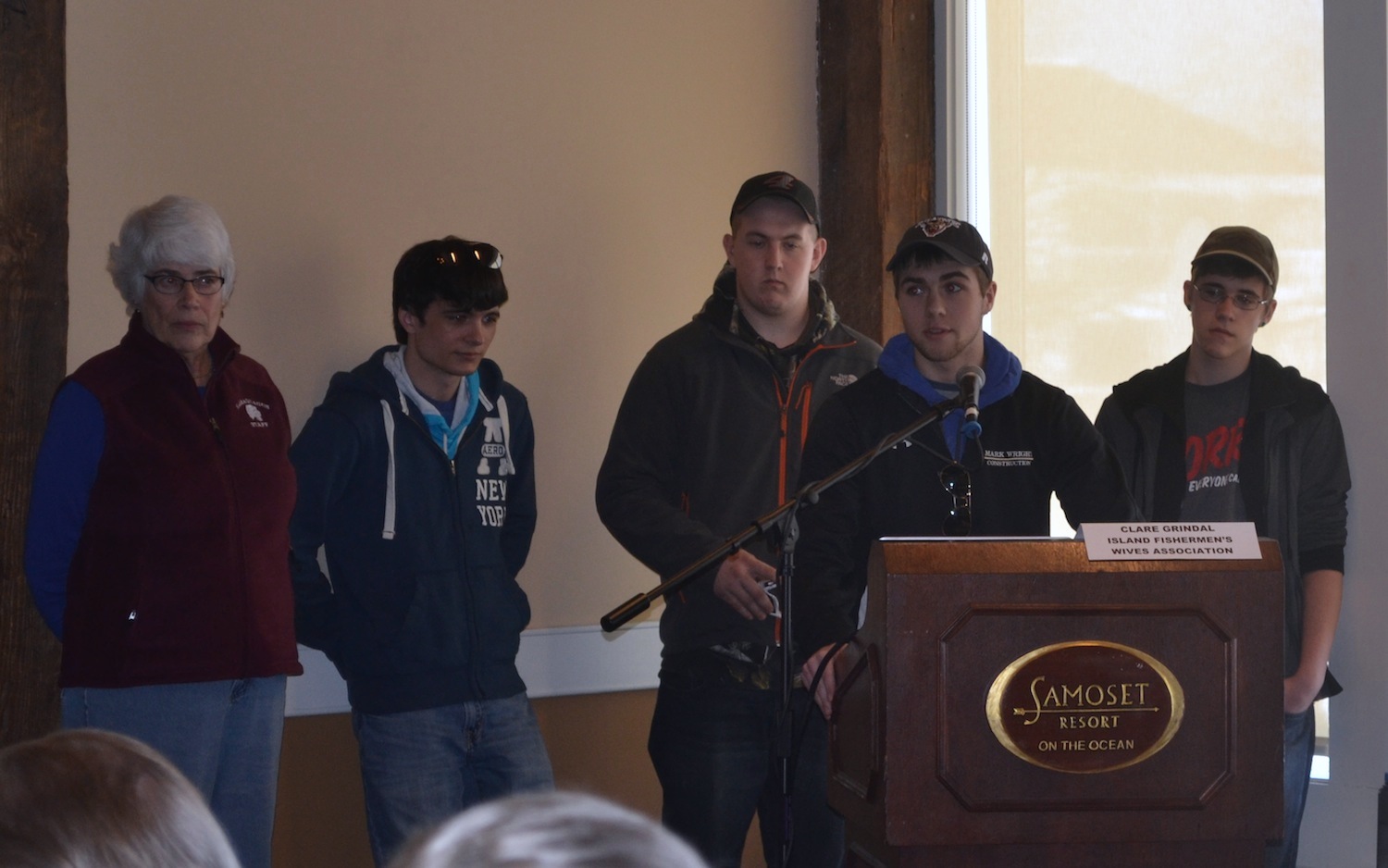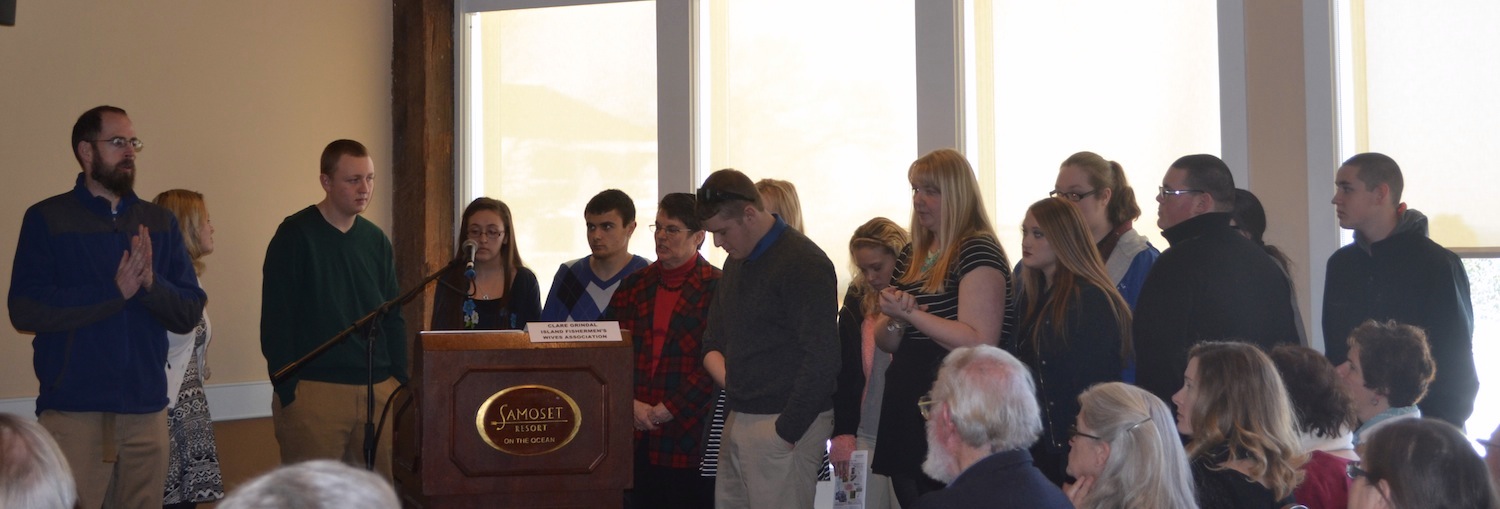Every year March rolls around and fishermen, marine scientists, and industry members from along the coast of Maine gather in Rockland at the annual Fishermen's Forum. This is the 40th year this event has been running, and it is a great opportunity for everyone to connect about the major challenges and innovative ideas to address changes in Maine's fisheries.
After the fall kickoff event on Hurricane Island, the Eastern Maine Skippers Program students have been busy developing green crab project plans to implement this spring. The Fishermen's Forum was a great opportunity for all of the school groups to gather and share their project updates to the broader community. Student's from all of the schools (North Haven, Vinalhaven, Deer Isle Stonington, George Stevens Academy, Narraguagus, and Jonesport-Beals) presented on their project ideas, and the whole group will be giving a final presentation about their approach to a green crab solution on May 28th at the Grand Auditorium in Ellsworth. Below is a summary of the range of project ideas that students presented on during their slot at the forum:
North Haven students have proposed two main projects around creating fertilizer from green crabs: one group is going to determine the best ratio of green crab meal to soil for optimal growing, and the other group is going to be looking at the opportunity of green crabs as being a natural nematode suppressant and will be comparing the quantity and quality of the produce grown from corn, beans, and tomatoes that are grown with green crab added to the soil vs. their control.
Vinalhaven students have focused their efforts on testing the efficiency of traps and bait in capturing green crabs, and also on developing creative cooking ideas to make green crabs a new tasty menu item. One of the student groups is going to trial a trap used by Unity College students at a variety of depths and trying different types of bait to determine the most efficient way to harvest green crabs. Another group is attempting a new cooking method which involves a two-part process of softening the crab shell first in a vinegar brine, flavoring with teriyaki, and then smoking the crabs whole. Part of the cooking challenge will be for students to determine if there is a preferable size for the crabs which results in a soft shell and positive taste results.
Deer Isle-Stonington High School students are banding together to assess the real impacts of green crabs by asking "How do green crabs affect the lobster industry in the waters around Deer Isle?" Students will be documenting where and in what densities they are finding green crabs, determining if green crabs eat lobsters and between what size range, if green crabs and lobsters are competing for the same food, and whether the local lobster settlement is lower because of green crabs. Students plan to collect their data using permitted ventless traps, and looking at the population ratio of green crabs to juvenile lobsters within their survey area.
George Stevens Academy students are planning to see if crushed green crab powder can be added to grass fertilizer and marketed to local golf courses like the Blue Hill Country Club. They will be testing nutrient levels in the soil with the addition of green crabs, and, if their project succeeds, look into larger distribution opportunities with their product. First, they are in the market for a dehydrator, and are waiting for the snow to melt so they can set their traps!
Narraguagus High School is planning to test three different green crab traps to determine the most cost effective and efficient design-- one used by the Department of Marine Resources (DMR) in a 1950s green crab survey, one triangular trap design, and one design they are still working on. With the help of donated supplies from Brooks Trap Mill they are going to be fishing these traps and comparing which fishes best. These students have also been surveying local community members, including wormers, clamdiggers, and gathering testimonials about the scope of the green crab problem, and its potential long-term impacts on important coastal industries.
Jonesport-Beals High School students have also been exploring compost and food opportunities for green crabs. A few highlight ideas include developing green crab rangoon, green crab cakes, green crab sushi, and a specialty green crab spice which could flavor seafood and soups--the spice would be produced by cooking, dehydrating, and grinding up green crabs into a powder!
We were impressed with the quality of the presentations from students-- their project ideas have matured so much from the fall, and students delivered a polished presentation to a packed room! We wish the Skippers the best of luck as they launch into their projects, and hope that there will be a taste-testing opportunity during the May event to sample green crab recipes!


